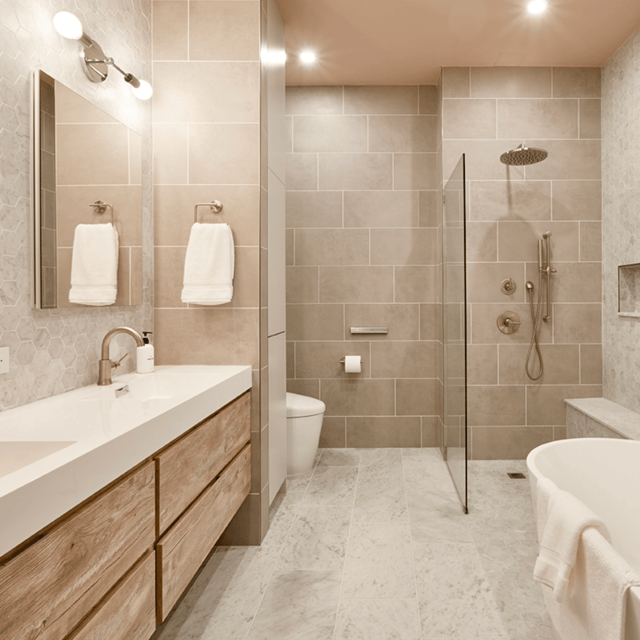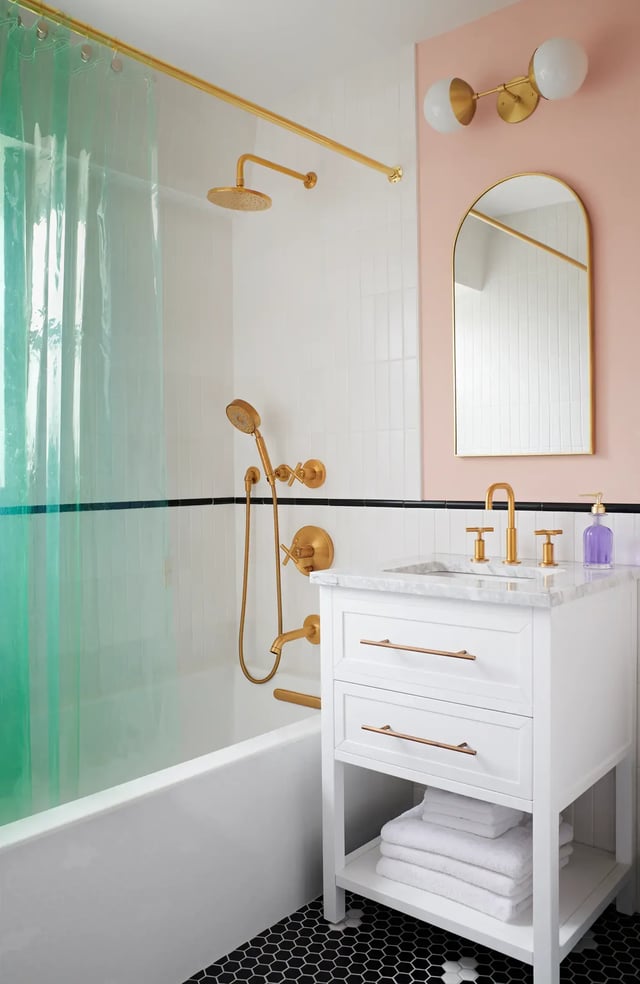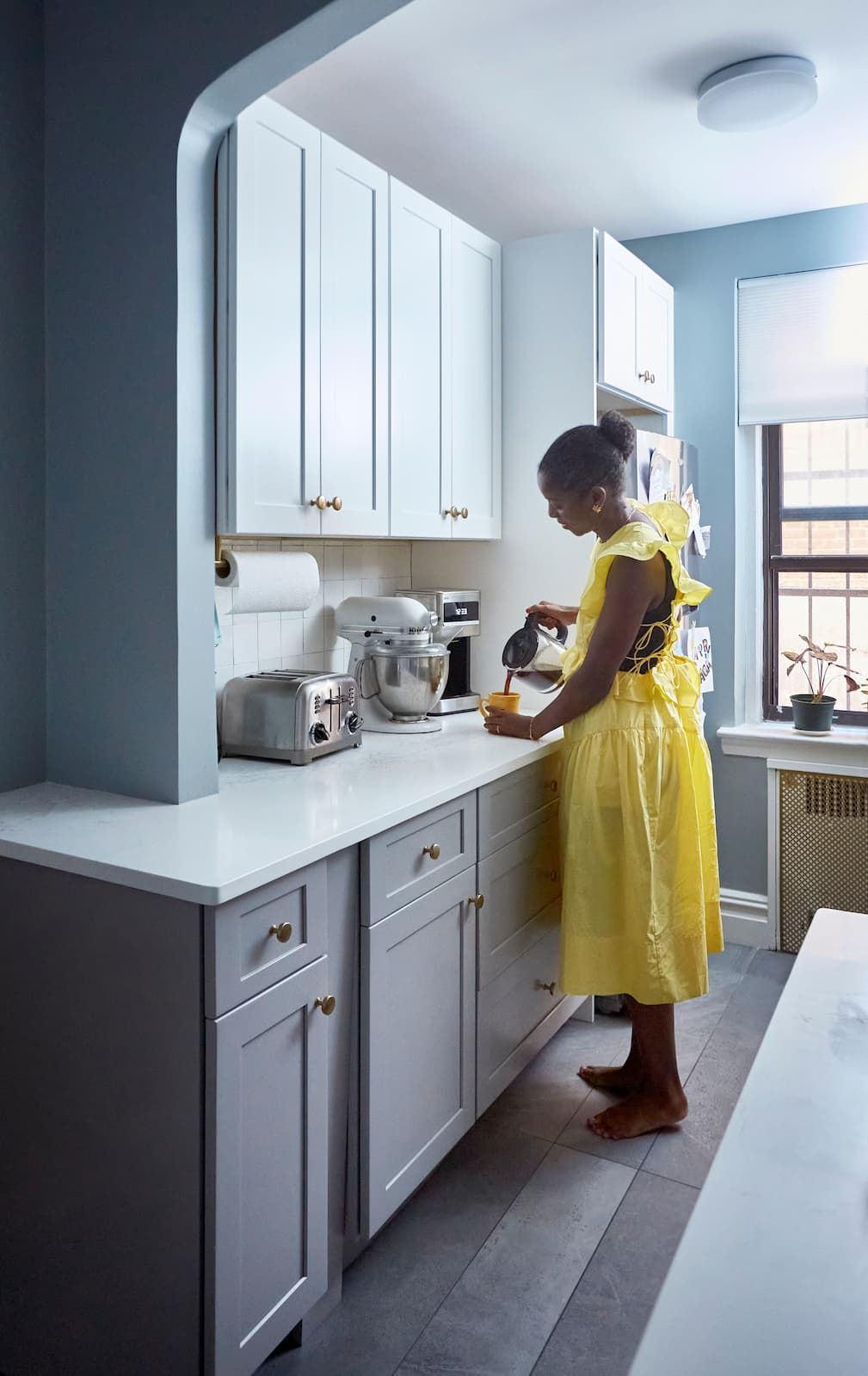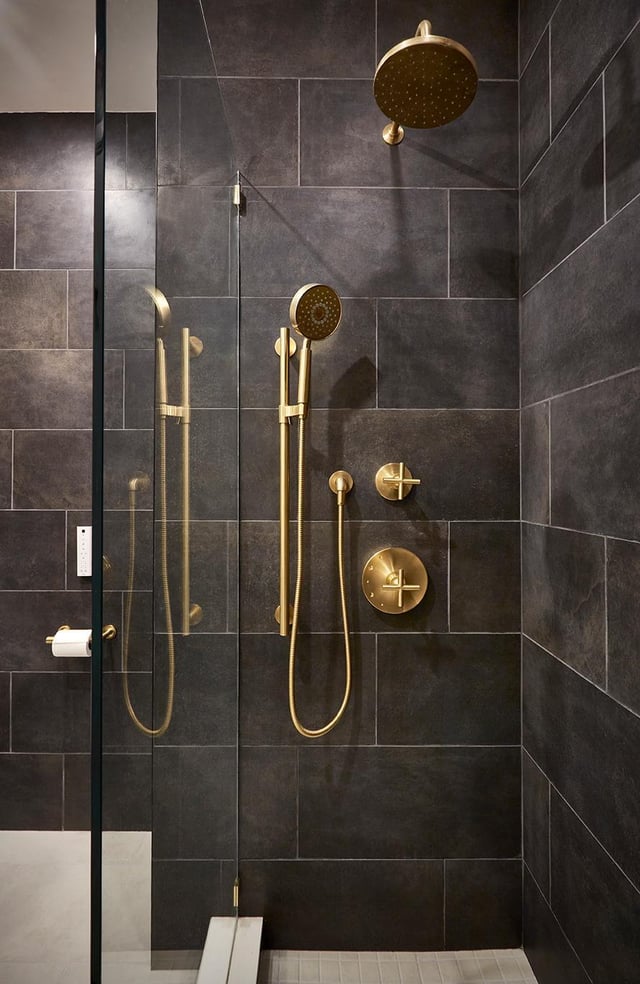
Bathroom
New York City Bathroom Remodels: Planning & Renovation Tips
12.05.2025


In This Article
The sink might seem like a small detail, but it plays a big role in how your bathroom looks and works. The right choice can open up a tight space, add storage where you need it, or simply make your daily routine a little easier. Because the bathroom is one of the most-used rooms in the house, it’s worth taking the time to find a sink that fits both your style and how you actually live. With so many types out there, there’s a great option for every layout—and every kind of homeowner.
Different types of bathroom sinks come with their own strengths and trade-offs. Here’s a side-by-side look to help you weigh your options:
|
Type |
Price Range |
Pros |
Cons |
|
Undermount |
Medium |
Clean, uninterrupted counter surface; easy to wipe messes straight in |
Requires solid surface countertops; installation is complex |
|
Drop-in |
Low |
Simple to install; works with most counters; budget-friendly |
Rim can catch debris; appearance is less sleek |
|
Pedestal |
Low–Medium |
Frees up floor space; traditional look; works in small bathrooms |
No counter space; visible plumbing; limited storage |
|
Vessel |
Medium–High |
Eye-catching style; easy to swap out; fits on most vanities |
Prone to splashing; sits high above counter; needs special faucet |
|
Floating |
Medium–High |
Makes rooms feel airy; wall-mounted to save floor space; modern look |
Needs strong wall support; limited counter area |
|
Console / Trough |
High |
Great for multiple users; open, stylish design; doubles as a focal point |
Requires more space; plumbing is more visible; higher cost |
Ideal for: Homeowners who value easy cleanup and a smooth counter appearance
Undermount sinks are installed beneath the counter, creating a sleek visual flow and making it simple to wipe spills directly into the basin. Their look is subtle, so the eye stays on your counter and backsplash. These sinks are a practical choice for busy bathrooms and work well for families who prioritize quick cleanups. However, installation can be more involved, and they require sturdy countertop materials.
Check out this Brooklyn bathroom’s handsome sink
Ideal for: Those seeking a straightforward, affordable installation that’s compatible with most bathroom countertops
Drop-in sinks, also called self-rimming sinks, are supported by a rim that sits on the countertop. They suit a variety of surfaces and are one of the most accessible options for replacements or upgrades. The rim creates a slight lip, which can catch crumbs or water, but it also helps protect the countertop from spills. If you want an easy and budget-friendly solution, it’s hard to go wrong with a drop-in.
Bring Your Dream Bathroom to Life

Ideal for: Homeowners working with a narrow bathroom footprint or powder rooms who want a timeless, elegant look
A pedestal sink consists of a basin supported by a slender column, creating a compact footprint that opens up floor area. These sinks are known for their graceful style and simple presence in classic homes. Because they don’t include cabinets or extra surfaces, pedestal sinks work best where you don’t need much storage. Plumbing remains exposed beneath the basin, but this look can feel light and charming in the right setting.
Ideal for: Someone hoping to make a bold visual statement or add an artistic touch to their bathroom
Vessel sinks sit completely above the countertop, like a bowl or basin perched on its surface. This allows for a wide range of shapes and materials, offering an opportunity to showcase personality—-whether that be Art Deco or Retro Mid-Century Modern. They’re easy to update if you want to change your look over time, though their elevated design means you’ll want to consider faucet height and water splash. Cleaning can be simple, but some people find their height less comfortable for everyday use.

Behold this bathroom design with an eye-catching vessel sink
Ideal for: Modern bathrooms or smaller spaces where maximizing openness and clean lines is the goal
Mounted directly onto the wall, floating sinks open up the area beneath and give the illusion of extra space. This style feels especially fresh and airy, making it popular in contemporary renovations and powder rooms. The design keeps the floors clear, which can make cleaning a breeze and visually expands tight quarters. On the flip side, the lack of cabinetry means less storage and countertop room.

Ideal for: Households who want a spacious, shareable basin and a blend of style and utility
Console and trough sinks are often long and shallow, mounted on legs or brackets for a look that’s both useful and elegant. They’re especially helpful in family bathrooms or spaces meant for multiple users at once. The open structure underneath creates room for baskets or stools, but leaves plumbing partially exposed. While these sinks elevate the aesthetic and functionality, they generally require a bigger footprint and investment.

View this stylish New York bathroom’s sink
The finish you choose for your sink will affect not just the appearance, but also long-term durability and maintenance.
Ceramic sinks are a mainstay for bathrooms, known for their smooth surface and easy clean-up. They’re affordable and resist most stains, but can chip if struck by a heavy object. These sinks coordinate easily with many styles and are widely available, making them a practical option for most bathrooms.
Porcelain sinks have classic appeal and a beautifully glossy finish. They stand up well to regular use, but may show signs of wear after many years. Porcelain offers a timeless look that fits just as well in a vintage-inspired space as in a modern setting.
Quartz blends resin and natural stone to create a strong, low-maintenance surface. These sinks come in multiple colors and add quiet elegance, but they do come at a higher price. They are also non-porous, which means they resist bacteria and require less day-to-day care.
Using marble in your bathroom brings an unmistakable elegance and luxurious presence. Each marble sink features unique veining and color variations, making every piece one of a kind. While marble is durable and long-lasting, it’s also a porous material that requires regular sealing to protect against water and stains. If you want a sink that doubles as a natural work of art and don’t mind some extra maintenance, marble is an exceptional choice.
Glass sinks make a memorable impact, offering unique shapes and vibrant colors. They’re crafted from tempered glass for added toughness, but can still be susceptible to scratches and require gentle care. Because of their transparency, they reflect light beautifully and can instantly brighten a room.
More common in kitchens but gaining ground in modern bathrooms, stainless steel offers an industrial style that’s easy to clean. It resists rust and stains, but can show water spots and is prone to scratches. Stainless steel works especially well in modern or minimalist bathrooms and is a smart choice for high-traffic spaces.
Natural stone—like marble, granite, or travertine—brings a distinct texture and a feeling of luxury to your bathroom sink. Each one is unique and solid, though they do require more maintenance and can be quite heavy. If you want your bathroom to feel truly one-of-a-kind, stone offers a level of individuality that’s hard to match.
Design a Home That’s Uniquely Yours
Block can help you achieve your renovation goals and bring your dream remodel to life with price assurance and expert support.
Get Started
The right professional support can make a world of difference for your bathroom remodel. With Block, you have access to a network of trusted contractors, each vetted for quality and reliability. Easily compare side-by-side bids and real reviews, and benefit from price protections and secure payments every step of the way. From the first sketches to the finishing touches, your renovation is managed with care, so you can focus on creating a home that feels just right.

Written by Block Renovation
Will changing my type of sink require adjusting my plumbing?
Yes, switching to a different type of bathroom sink may require rerouting to your plumbing. For example, moving from a drop-in sink to a wall-mounted or vessel sink can change the height or location of the drain and water lines. Before you choose a new sink style, it’s a good idea to consult with your contractor to understand what modifications might be needed for your space.
Is sink installation an easy DIY project?
What makes bathroom sinks different from kitchen sinks?

Renovate confidently with Block
Easily compare quotes from top quality contractors, and get peace of mind with warranty & price protections.
Thousands of homeowners have renovated with Block

4.5 Stars (100+)

4.7 Stars (100+)

4.5 Stars (75+)

Bathroom
New York City Bathroom Remodels: Planning & Renovation Tips
12.05.2025

Bathroom
Slanted Roof Bathrooms and Shower Design Ideas
11.22.2025

Bathroom
Choosing Bathroom Fixture Finishes - Inspiration & FAQ
10.22.2025

Bathroom
Designing a 40-Square Foot Bathroom? Here’s What Actually Matters
10.22.2025

Bathroom
Different Types of Bathroom Sinks
10.22.2025
Renovate confidently